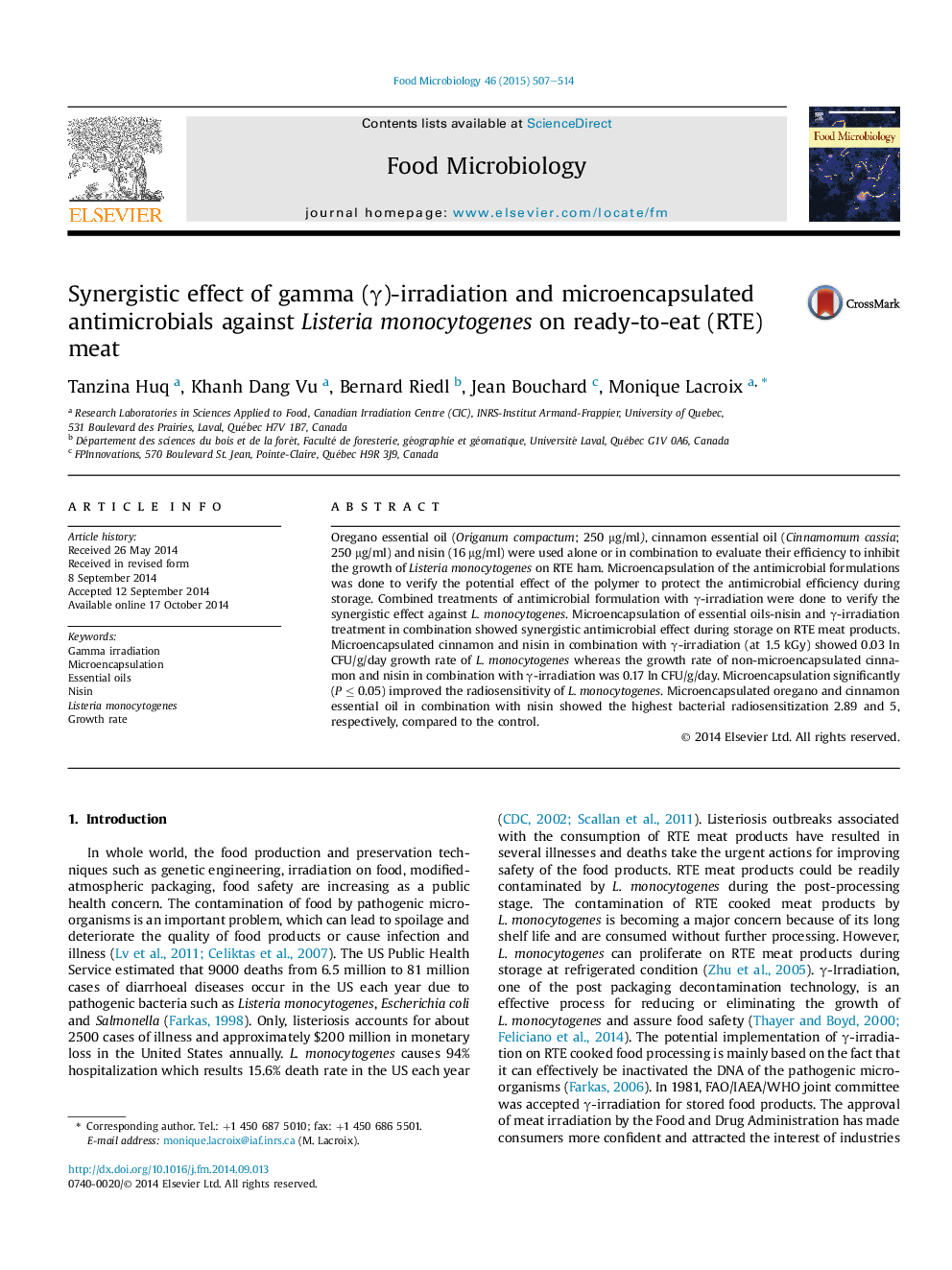| کد مقاله | کد نشریه | سال انتشار | مقاله انگلیسی | نسخه تمام متن |
|---|---|---|---|---|
| 6288594 | 1616254 | 2015 | 8 صفحه PDF | دانلود رایگان |

- Microencapsulation was found to be an effective technology.
- γ-Irradiation showed a synergistic effect with microencapsulated antimicrobials.
- Microencapsulated antimicrobials reduced the growth rate of Listeria monocytogenes.
- Microencapsulated cinnamon EO and nisin showed the best antimicrobial effect.
Oregano essential oil (Origanum compactum; 250 μg/ml), cinnamon essential oil (Cinnamomum cassia; 250 μg/ml) and nisin (16 μg/ml) were used alone or in combination to evaluate their efficiency to inhibit the growth of Listeria monocytogenes on RTE ham. Microencapsulation of the antimicrobial formulations was done to verify the potential effect of the polymer to protect the antimicrobial efficiency during storage. Combined treatments of antimicrobial formulation with γ-irradiation were done to verify the synergistic effect against L. monocytogenes. Microencapsulation of essential oils-nisin and γ-irradiation treatment in combination showed synergistic antimicrobial effect during storage on RTE meat products. Microencapsulated cinnamon and nisin in combination with γ-irradiation (at 1.5 kGy) showed 0.03 ln CFU/g/day growth rate of L. monocytogenes whereas the growth rate of non-microencapsulated cinnamon and nisin in combination with γ-irradiation was 0.17 ln CFU/g/day. Microencapsulation significantly (P â¤Â 0.05) improved the radiosensitivity of L. monocytogenes. Microencapsulated oregano and cinnamon essential oil in combination with nisin showed the highest bacterial radiosensitization 2.89 and 5, respectively, compared to the control.
Journal: Food Microbiology - Volume 46, April 2015, Pages 507-514